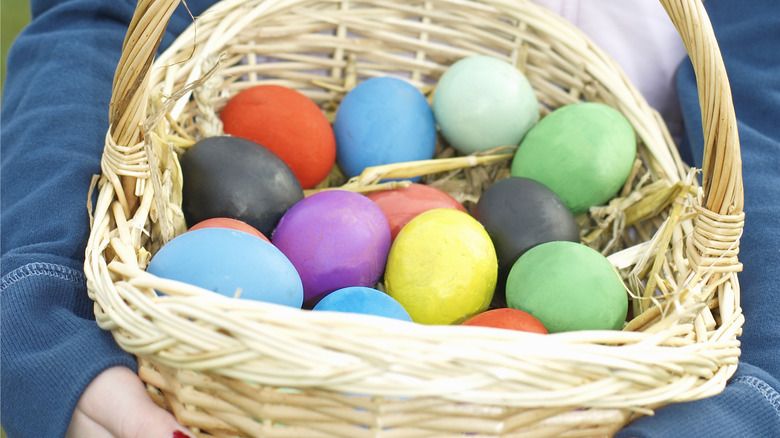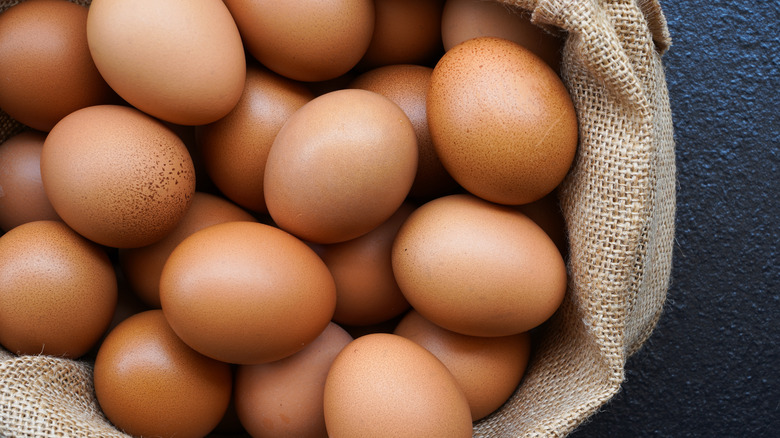You Can And Should Use Brown Eggs For Easter Eggs
Decorating Easter eggs is really fun when you're a little kid and don't care at all how they turn out as long a you can splash around and make a colorful mess. Once you're older, though, it can be a bit stressful if you actually want the eggs to come out looking good. You've tried dying them, you've tried painting them, you may even have tried swirling them in shaving cream, but unless you've got Martha Stewart-level skills, there's a chance you've been disappointed by the results.
If your eggs look like sloppy Pinterest fails, well, that's on you. But if the real problem is that they're just too pale and washed-out looking no matter how long you soak them in dye, that may actually have more to do with the eggs you're using. Although it seems to go against all reason, it turns out that instead of dyeing white eggs, we should all be using brown ones, instead.
Brown eggs make for brighter colors
Wha-a-at? How could a brown egg possibly color up better than a white one? It sure doesn't work that way with hair dye — blondes get to play with all the fun and funky shades right out of the box, while brunettes may have to resort to stripping their hair with bleach before dyeing in order to achieve a similar effect. Well, egg shells are nothing like human hair, and it seems that the darker ones actually do take very well to being dyed. Redfin explains that the reason why brown eggs work better is because this slightly darker base shade gives the dye a deeper look, whereas white shells turn even the most vibrant hues into pastels.
For a more unusual, if not exactly effort-free, Easter egg option, though, you could always get in on the backyard chicken trend and buy yourself some auracanas. These hens are known for laying beautiful blue eggs with no dye required.

